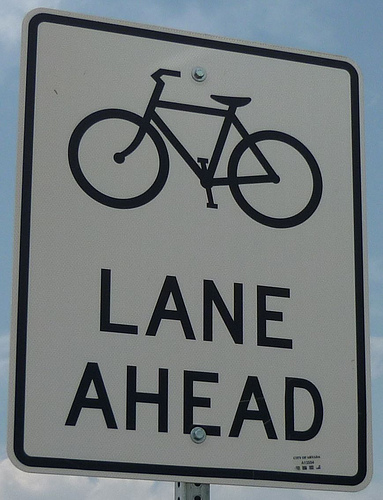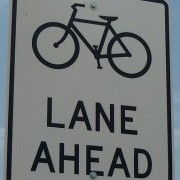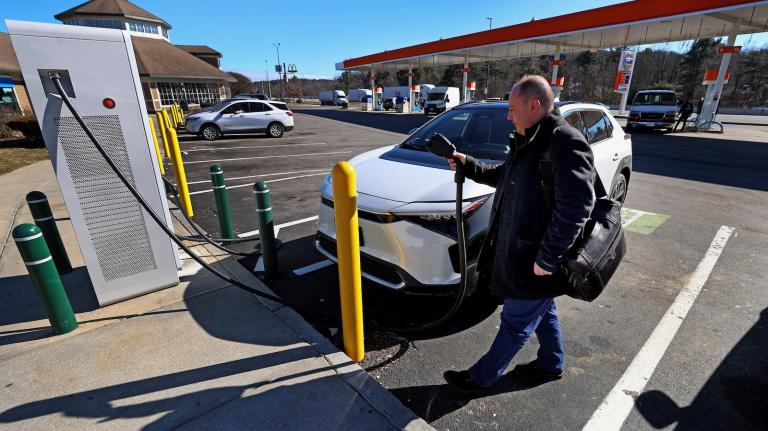 Photo: Steve RThere’s been a bicycle movement brewing for years, and since 2008 it’s been unstoppable. Things really ramped up in 2010, but it’s looking like next year will be even better. Here’s what I predict we’ll see in 2011.
Photo: Steve RThere’s been a bicycle movement brewing for years, and since 2008 it’s been unstoppable. Things really ramped up in 2010, but it’s looking like next year will be even better. Here’s what I predict we’ll see in 2011.
Bike sharing comes into its own
Bicycle-sharing programs — systems that allow people to check bikes out for less than the price of a cup of coffee — have been a big hit in Europe for years, but were little known in this country until last summer. Now, they’re poised to become one of the most powerful tools for bringing bicycling into the mainstream. They also have the potential to reduce car traffic, lighten the burden on overwhelmed transit systems, and improve public health. Along with these benefits, the programs are setting a precedent for creative public-private funding partnerships.
In 2010, bike sharing came to three U.S. cities: Minneapolis, Denver, and Washington, D.C. All three programs have earned rave reviews.
Meanwhile, New York City has been aggressively laying down a bike network and has issued an RFP for a bike-sharing proposal that is bound to further populate its new cycle tracks and rival its infamous car traffic. Other municipalities, from Miami to San Francisco, are signing contracts and drumming up funding.
Anti-bike backlash
As bicycling increases — and bike infrastructure along with it — we’re bound to see more about bicycling in politics and the news.
If 2010 was the year that mayors of major cities fell in love with bicycling (or just fell while bicycling), then 2011 will be the year their embrace of bicycling is used against them in Tea Party-flavored backlash — exemplified by a Colorado gubernatorial candidate’s wacky warnings that Denver’s bike-sharing program was part of a United Nations plot to control the city. Of course, it isn’t always funny, and Tea Party candidates don’t all hate bicycles. Regardless, your “bicycle” news alert will definitely blossom.
We’re also bound to see a nationwide surge in fabricated “bikes v. cars” rhetoric in the media as editors pen attention-grabbing headlines about any road rage incident that happens to involve someone on a bicycle, or any neighborhood gadfly willing to stand out on a street corner with a sign. If your local media is poised to pounce on bikes, take heart: in Portland this sort of absurd treatment reached an unsustainable crescendo in 2008, after which things calmed down a lot. Your job is to keep speaking reason while the madness runs its course.
Rewriting the rules
Okay, this is really wonky. But it just might be the most important thing to happen for bikes in 2011.
The next year could see such rare beasts as bike boxes, cycle tracks, and buffered bike lanes emerging into common use.
Why? Well, right now, all road design and engineering must follow the guidelines laid out in an unwieldy federal document called the Manual on Uniform Traffic Control Devices, or MUTCD. First drafted during the 1940s, it still reflects the values and reality of the golden age of the automobile, and offers limited guidance for cities that want to build a comprehensive bicycle network.
Cities for Cycling is a coalition of transportation planners from around the U.S. who are seeking to change all that. Using lessons learned in Europe as well as in recent experiments in U.S. cities like Portland, Seattle, and New York, the group is rapidly rolling out new “best practices” papers. Cross your fingers that their recommendations will be incorporated into this year’s revision of the MUTCD.
E-bikes
If the hype is right, 2011 will be a massive year for electric cars — but guess what? They’re still cars.
The good news is that electric bicycles are also still bicycles. And they’ll be taking 2011 by storm, as people who have always wanted to do more of their daily transportation by bicycle discover the transformative power of the electric assist — which is very different from a motorcycle throttle, thank you very much.
Electric bikes are already widely used in parts of Europe and Asia, and are just now starting to catch on in the U.S.
As more options come onto the U.S. market, we’ll begin to see more people like a middle-aged couple I met in hilly Olympia, Wash., who sang the praises of their electric assist bikes as a way to get around actively without having to feel like fitness fiends.
Locavores by bike
There’s already quite a bit of creative intermingling between the local food and the bicycle movements — and in the next year, I predict we’ll see these two powerful emerging social forces learn new ways to work tog
ether. More businesses that deliver local produce to stores by pedal power. More bicycle-powered, hyperlocal urban farming.
And there’s yet more room for synergies to flourish in the public health movement to combat childhood obesity that’s been focusing on putting healthy food into schools. Maybe we’ll even see Michelle Obama giving the Safe Routes to School movement a boost.
While I’m dreaming, my wish list for 2011 includes ample bike parking at farmers markets and grocery stores across the nation, and a Michael Pollan book about bicycling. Think big, Michael!
Carfree families
With a recession that just won’t quit, a growing sense of environmental urgency, and the increasingly widespread availability of cargo bicycles and child seats in the U.S. market, we’ll start seeing more families go down to a single car or give up auto ownership altogether in 2011.
Whether these families are going carfree by choice or by necessity, it looks like the times may at last be changing along with them. Revitalized cities, retrofitted suburbs, and the movement towards 20-minute neighborhoods will be key to making life without a car not just possible but desirable. The big challenge will be transportation equity — making sure walkable and bikeable neighborhoods with good transit service aren’t just a luxury for those who can afford to choose them.
Whatever happens, in 2011 the word “carfree” won’t sound as radical or intimidating as it used to — and it’ll continue to become a gold standard for decision makers and a badge of honor for city dwellers.
Happy New Year, and thanks for reading. What are your hopes (or fears) for bicycling in 2011?


